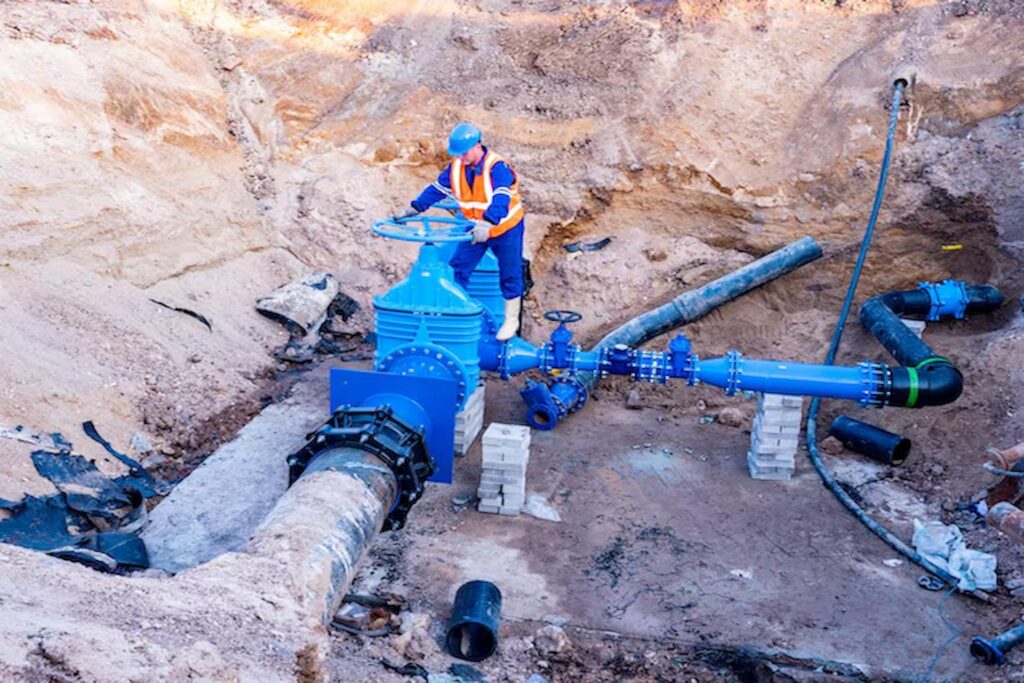When it comes to installing utilities like water, gas, or electrical lines, the method you choose can significantly impact your project’s time, cost, and environmental footprint. Should you go with traditional trenching, which has been the go-to method for decades, or opt for the modern and less invasive approach of moling services? In this blog post, we’ll break down both options to help you make an informed choice.
Understanding the Basics: What Are Moling and Trenching?
What is Moling?
Moling, also known as trenchless technology, involves using a pneumatic machine (a mole) to create underground tunnels for pipes or cables. This method eliminates the need to dig large trenches, making it a faster and less disruptive option.
Key Features of Moling:
- Minimal surface disruption
- Environmentally friendly
- Quicker installation process
What is Traditional Trenching?
Trenching is the conventional method of laying pipes or cables by excavating a long and deep channel in the ground. While effective, it often requires heavy machinery, disrupts the landscape, and takes more time to complete.
Key Features of Trenching:
- Ideal for complex projects requiring visibility
- Effective in areas where soil conditions demand full excavation
- Can be labour-intensive and costly
Comparing Moling and Traditional Trenching
-
Cost-Effectiveness
While traditional trenching may appear cost-effective initially, the long-term expenses can pile up due to landscaping repairs and extended project durations. Moling, on the other hand, has higher upfront costs for specialised equipment but minimises restoration costs.
Example: A homeowner installing water pipes through a landscaped garden may save significantly with moling services because it preserves the garden’s integrity.
-
Time Efficiency
Moling is typically faster since it avoids the need to dig and refill extensive trenches. This speed is particularly beneficial for urgent projects or in areas with high traffic where prolonged disruptions are not feasible.
Statistic: Projects using moling can be completed up to 50% faster than traditional trenching, depending on the scope.
-
Environmental Impact
Trenching often leads to significant soil displacement and damage to vegetation, which may take years to recover. Moling reduces this impact by preserving the surface and only disturbing the immediate area of installation.
Fact: Trenchless methods like moling reduce excavation waste by nearly 90% compared to traditional trenching.
-
Disruption to Daily Life
For projects in urban areas or residential properties, minimising disruption is key. Moling allows utilities to be installed under driveways, roads, or buildings without major interruptions.
Example: A city installing underground cables beneath a busy road can avoid prolonged closures by using moling services instead of trenching.
-
Suitability for Various Projects
While moling is ideal for small-scale and straightforward utility installations, trenching remains necessary for projects requiring extensive pipe networks, visual inspection, or structural reinforcements.
Key Takeaways: Which Method Should You Choose?
Here are five actionable tips to help you decide:
- Consider the Environment: Choose moling for environmentally sensitive areas where preserving the landscape is a priority.
- Factor in Time Constraints: If speed is crucial, moling is your best bet.
- Evaluate Your Budget: While moling can save money on restoration, trenching may be more cost-effective for large, open areas.
- Assess Project Complexity: Trenching is better for intricate projects requiring constant visual inspection.
- Consult Professionals: Always seek advice from experts in moling services or trenching to determine the best approach for your specific needs.
Real-Life Applications: When to Use Moling or Trenching
Moling in Action:
- Residential Projects: Installing water or gas lines under driveways and landscaped yards.
- Urban Installations: Laying utility pipes beneath busy streets without disrupting traffic.
Trenching in Action:
- Construction Sites: Installing large drainage systems or sewer lines.
- Agricultural Settings: Laying irrigation pipelines over vast, open fields.
Why Moling Services Are on the Rise
Moling has gained popularity for its efficiency and minimal environmental impact. Many modern projects prioritise sustainability and reduced disruption, making trenchless technology a preferred choice. Whether you’re a homeowner, contractor, or city planner, moling services offer an innovative solution to meet today’s infrastructure demands.
Conclusion:
Choosing between moling and traditional trenching depends on your project’s specific requirements. If you value speed, minimal disruption, and environmental sustainability, moling services are worth considering. For larger, more complex installations requiring visibility, traditional trenching remains a reliable option.

